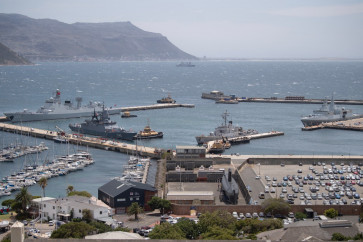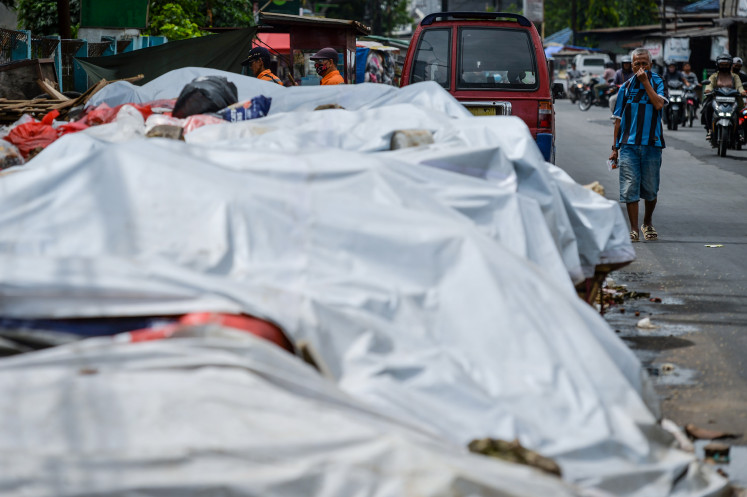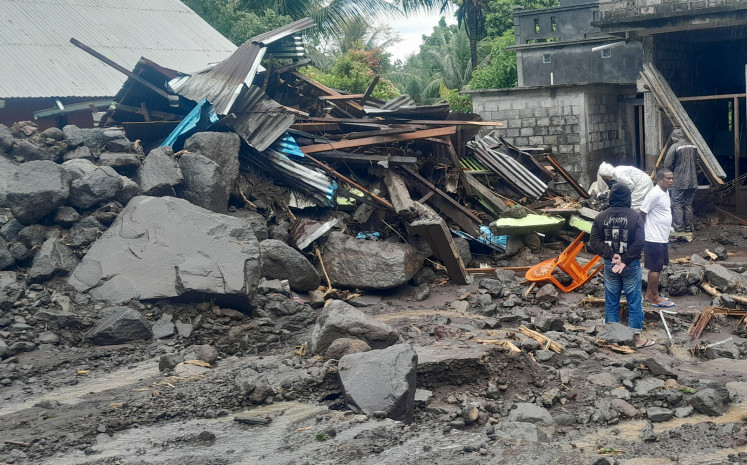Popular Reads
Top Results
Can't find what you're looking for?
View all search resultsPopular Reads
Top Results
Can't find what you're looking for?
View all search resultsAdministration to improve access to Nusa Penida
The provincial administration has promised to improve access to the Nusa Penida island chain by enlarging a mainland fishing port at Gunaksa, Klungkung
Change text size
Gift Premium Articles
to Anyone
T
he provincial administration has promised to improve access to the Nusa Penida island chain by enlarging a mainland fishing port at Gunaksa, Klungkung.
Nusa Penida is a group of islets southeast of Bali that has grown into an attractive tourist destination.
“The construction of Gunaksa port will be completed in 2013,” Bali governor Made Mangku Pastika said Thursday during an open public meeting in Klungkung.
The fishing port in Gunaksa for decades has served as one of the main ports that the passengers, domestic and foreign visitors, use to reach the island. The ship operators mainly use traditional boats equipped with low power outboard motors.
The ongoing construction project would enable the port to receive larger and faster passenger ships.
The Nusa Penida islets comprise Nusa Gede, Nusa Lembongan and Nusa Ceningan. In the last decade, the islets have received a significant and steadily increasing influx of both tourism-related investment and foreign visitors. The offshore area around the islets boasts several majestic diving sites, including Penida Bay, Manta Point, Batu Lumbung, Batu Abah, Toya Pakeh and Malibu Point. Nusa Lembongan is the most famous of the three islands.
Pastika said that transportation access was the primary development problem the islets had to cope with.
“Gunaksa port will be the answer to that problem. The port will improve the access to those islands and hopefully will play a vital role in increasing the prosperity of the islanders,” Pastika said.
The dry weather and arid land of the islands have prevented the local islanders from cultivating water-consuming rice. Instead, most of the islanders rely on planting seasonal fruits, fishing or cultivating seaweeds.
The tourism industry has gradually became the islands’ economic backbone, offering wider job opportunity and better income for the local youths.
The islets could be reached from Sanur traditional port in Denpasar or another fishing port in Kusamba, Klungkung. Traditional boats left the ports for Nusa Penida once a day.
Another way is by boarding a big ferry from Padangbai harbor, Karangasem. It sails to Nusa Penida twice daily.
Most of the foreign visitors reach the islets by boarding traditional boats in Sanur or by modern fast boats at Bali’s largest ferry harbor in Benoa, South Denpasar.
Travelling by a fast boat is a far faster and more expensive alternative.
“The lack of transportation access is certainly a pressing problem for the islanders,” a Nusa Penida resident I Made Artha said.
He recalled an incident when the islanders had to rent a very expensive fast boat to transport a pregnant woman in need of an emergency medical procedure.
“Construction of Gunaksa port is financed by the central, provincial and regency administrations. The central government allocates Rp 90 billion, the provincial Rp 27 billion and the regency Rp 13 billion,” Pastika added.










